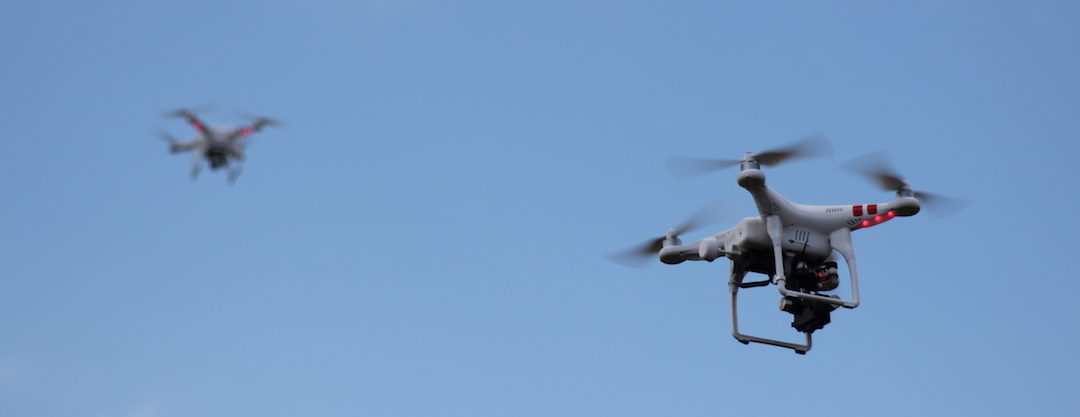The growing industry of small Unmanned Aircraft Systems (sUAS), a.k.a. “Drones”, has been increasingly talked about in the news and has become the hot topic of 2015. What’s all the fuss about, and what is making people so interested? Take a look below to see the first 10 things everyone should learn about sUAS, or “Drones”.
1. This is not new
People have been piloting aircraft remotely since the early days of aviation. They’ve been called many things: drones, remotely-piloted or radio-controlled aircraft, Unmanned Aerial Vehicles (UAV), and now small Unmanned Aircraft Systems (sUAS). But they’ve been around for a long time. Through wars, through peace, on film sets, and under Christmas trees. Some associations for users were founded as long ago as 1936.
2. But it’s growing faster than ever
With the development of very small and cheap sensing and computing technology, such as from the smartphone industry, the abilities of unmanned aircraft have skyrocketed and the cost has plummeted. As more industries have taken notice of what hobbyists and researchers have been able to achieve, bit by bit the whole world is starting to see the potential of using small unmanned aircraft in a variety of useful applications.
3. Multirotor helicopters have changed the game
By using microprocessors and motion sensors, sometimes in collaboration with GPS modules, the control of aircraft that hover has become exponentially easier. Multirotor helicopters are stabilized and controlled by very fast, tiny changes in the speed of each rotor. Using electric batteries to power the systems allows for very small, lightweight, and stable platforms from which payloads such as cameras can operate without tremendous vibration.
4. We’re moving from military to mainstream
Although the military has been using various forms of unmanned vehicles for many years, the public and commercial sectors of our economy are now discovering that using sUAS is within their reach. Interestingly, the middle of the industry is the latest to the game, as for decades now the amateur hobbyists and large defense contractors have primarily been the only ones working with the technology (from opposite ends of the spectrum).
5. Unmanned Aircraft Systems have a lot to offer
If you think drones are just for war or for film directors, you’re missing the really big picture. Unmanned aircraft systems are poised to completely change dozens of industries, including agriculture, construction, engineering inspection, wildlife research, search and rescue, and others. Eventually transportation of cargo and other integrations into a more complex airspace is likely, but to start with it will be incredibly valuable for many simply to have new tools at their disposal for jobs that would otherwise be much more dangerous, difficult, or impossible. The possibilities are endless, and everyone is realizing it.
6. Regulators aren’t ready
The growth of the unmanned aircraft industry has exploded over the past few years, and sadly at a time of particularly slow-moving government in the US. After the economic crisis of 2008 the Federal Aviation Administration spent years waiting for congress to re-authorize their budget. When it finally did in 2012 it also mandated that the FAA plan for the integration of UAS into the national airspace system, a goal for which the administration has consistently failed to meet its deadlines.
7. The United States is way behind
In the meantime, other countries including Canada, Australia, New Zealand, and the United Kingdom have all come up with policies and regulations that have allowed companies there to begin building on the opportunities of UAS technology. Although these countries can’t claim to have the amount of traffic or complexity as the airspace of the US, they have proven that the risks posed by small systems to people and property for low-level operations can be managed effectively without the need for complex or prohibitively expensive certification requirements akin to the larger aerospace industry.
8. There are no regulations yet (in the US)
Although many local and state governments have taken it upon themselves to fill the regulatory void by introducing rules limiting or restricting the use of sUAS, the Federal government still retains authority over the skies over the United States. The FAA, however, has yet to put in place any actual rules dictating what is or is not permitted (they keep telling us they are coming soon). What they do have is a policy stating that commercial use of UAS is not “authorized” without a Certificate of Authorization (COA). This policy has been proven to be unenforceable thus far, however the FAA has at times sent a number of startup businesses “Cease and Desist” letters and fined one operator for “careless or reckless” behavior.
9. The old-timers are still running things
The ones closest to the process of developing new regulations are the same people and groups that have been involved with FAA policy development for decades: large aerospace companies and defense contractors. What we are seeing as a result is that these new small systems are being treated as large-scale manned aircraft have always been, with years of cautious research and plans for expensive certification requirements. While this classic methodology does prioritize safety, it also threatens to place a very high cost of entry on many small businesses who wish to use the technology in ways that have not been shown to be unsafe (such as for agriculture or remote surveying).
10. Pressure is building
Aerospace companies and startup businesses aren’t the only ones impatiently waiting for sUAS regulations to be formalized. A great many industries are ready and eager to begin using the technology to benefit companies, public services, and research organizations. Although some larger companies have the resources to do their work overseas or meet expensive regulatory requirements, the vast majority of potential users of sUAS across the United States are being held back until the doors are opened to legal commercial use of the safe sUAS technology already available today.

